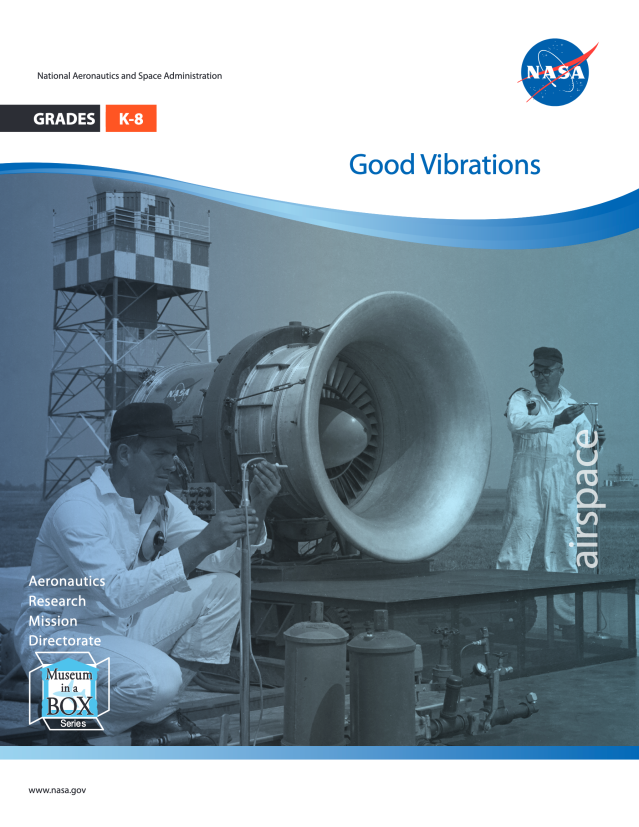
Audience
Educators
Grade Levels
Grades K-4, Grades 5-8, Grades 9-12
Subject
Physical Science, Waves, Energy, Flight and Aeronautics, Forces and Motion, Sound
Type
Educator Guides, Hands-on Activities, Lesson Plans / Activities
Noise: Good Vibrations
The Noise: Good Vibrations lesson will help students learn about transfer of energy, motions and forces, and interactions of energy and matter as they learn about the following concepts:
- Several principles of sound.
- Noise from aircraft is a growing problem that NASA along with many others are working to reduce the amount of
- All sounds are caused by vibrations.
- Vibrations can be sensed in several ways (hearing, seeing and touching).
- Pitch is related to the speed or rate of vibration.
- Resonance
- Natural frequency of an object.
Time Required:
60 minutes
National Science Standards Addressed:
Science K-4:
- Abilities necessary to do scientific inquiry
- Understanding about scientific inquiry
- Properties of objects and materials
- Position and motion of objects
- Abilities of technological design
- Understanding about science and technology
- Personal health
- Characteristics and changes in populations
- Changes in environments
- Science and technology in local challenges
- Science as a human endeavor
Science 5-8:
- Abilities necessary to do scientific inquiry
- Understanding about scientific inquiry
- Motions and forces
- Transfer of energy
- Personal health
- Populations, resources, and environments
- Risks and benefits
- Science and technology in society
- Abilities of technological design
- Understanding about science and technology
Science 9-12:
- Abilities necessary to do scientific inquiry
- Understanding about scientific inquiry
- Motions and forces
- Interactions of energy an
- Transfer of energy
- Personal and community health
- Environmental quality
- Natural and human-induced hazards
- Science and technology in local, national, and global challenges
- Abilities of technological design
- Understanding about science and technology
Topic: Sound, Vibrations, Waves, Noise, Frequency, Ptich, Beats, Resonance
Description: Three activities/demonstrations will help participants understand underlying concepts about sound.
- Tuning Forks Activity: Participants will engage in a series of demonstrations that illustrate the concept of vibrations, pitch, frequency, and beats.
- Thunder Drum Demonstration: Participants will see how adding a simple spring to the design of this drum results in some very unusual sounds.
- Resonator Activity: Participants will understand the concepts of natural frequency and resonance. They will directly observe resonance in a pair of demonstrations using a series of wooden dowels. In the first demonstration, four wooden dowels of various lengths are placed in the wooden base, which is then rocked back and forth. The different-size wooden dowels resonate at different times as the frequency of the back-and-forth motion of the base is varied. In the second demonstration, dowels of different diameter are used – varying the frequency of the back-and-forth motion of the wooden base again causes the dowels to achieve resonance at different times.
























